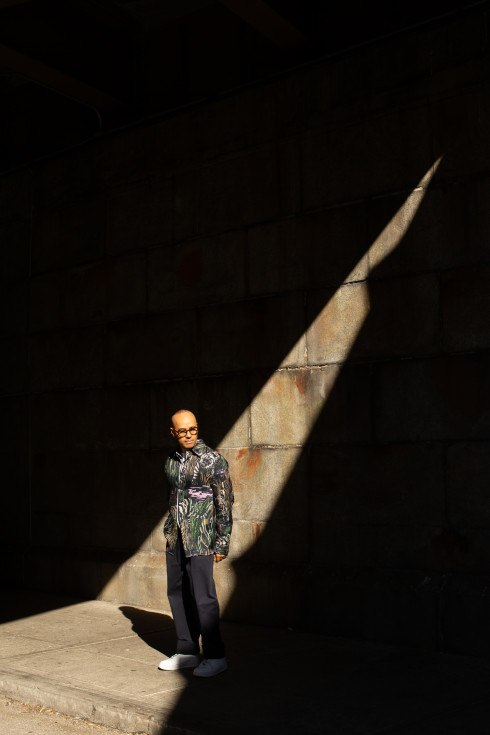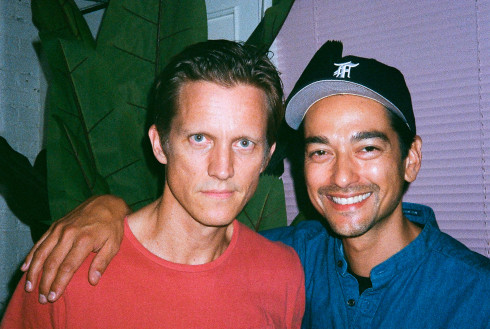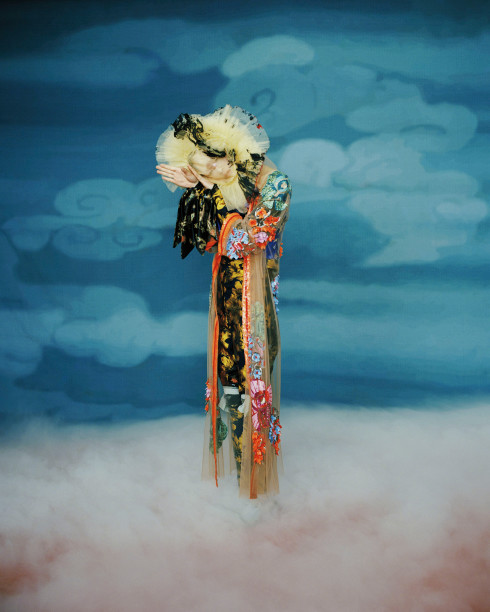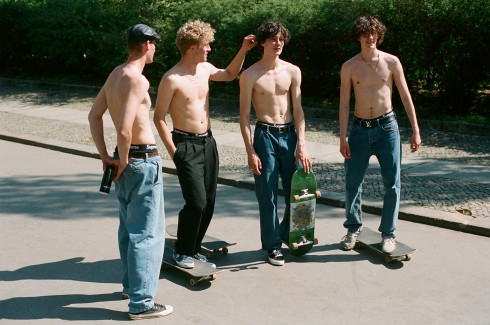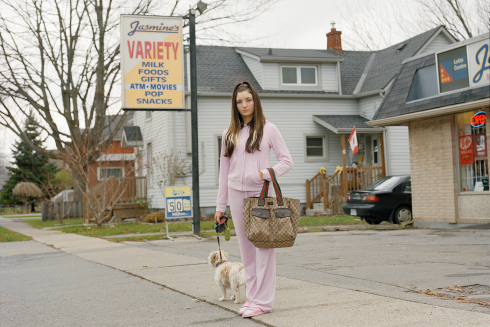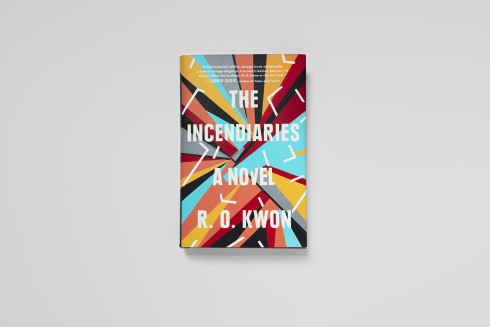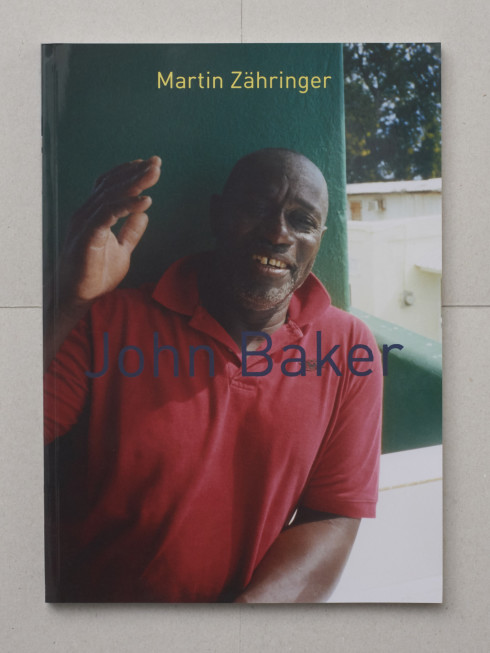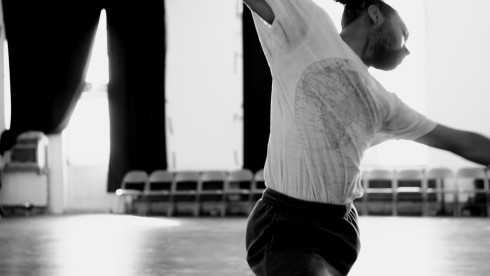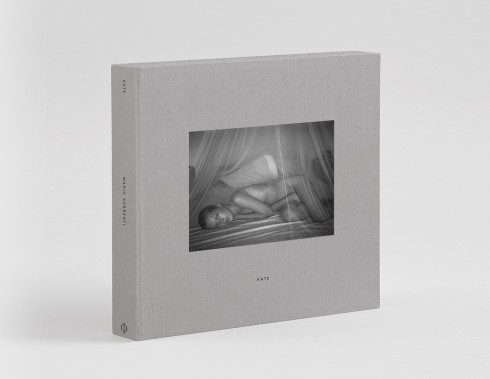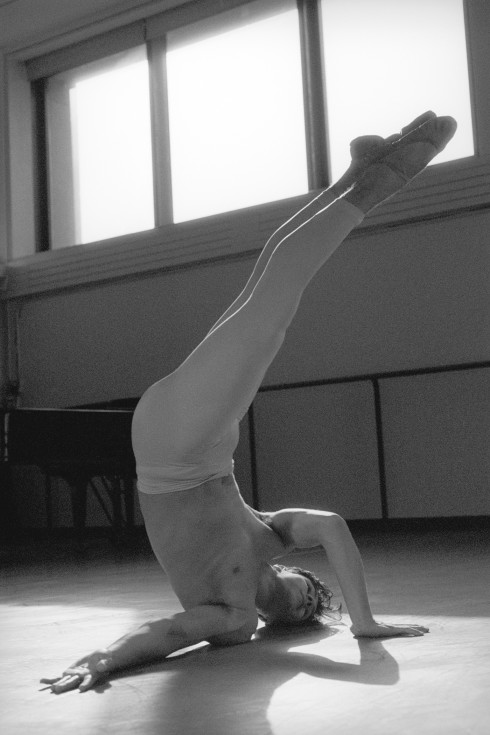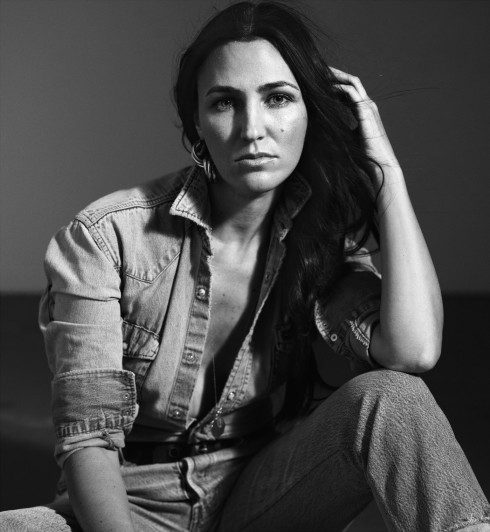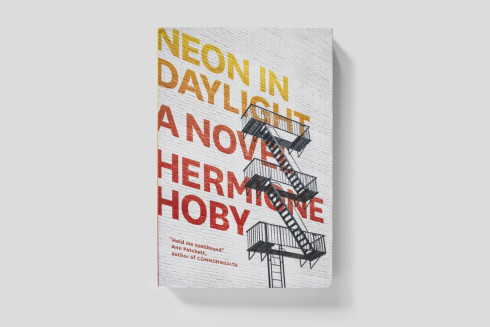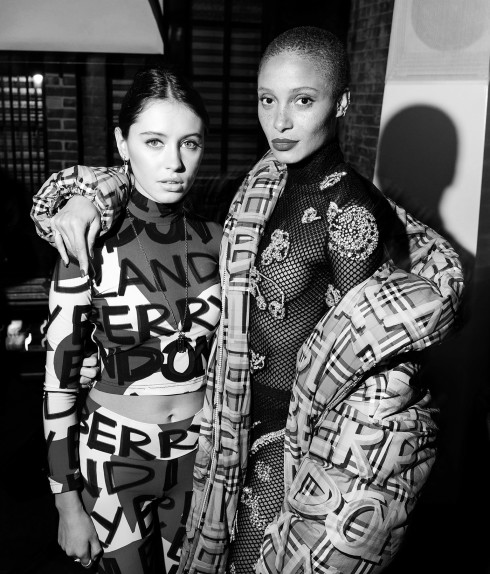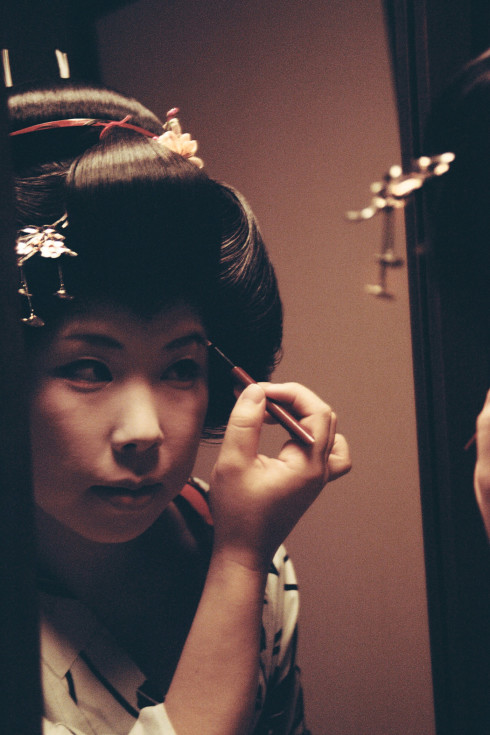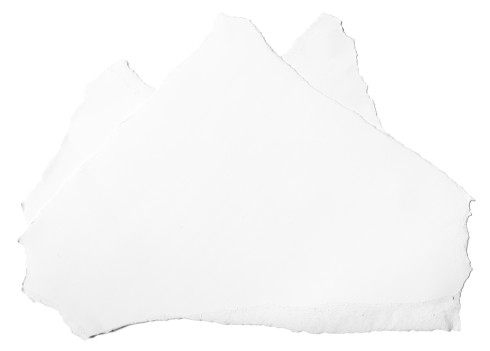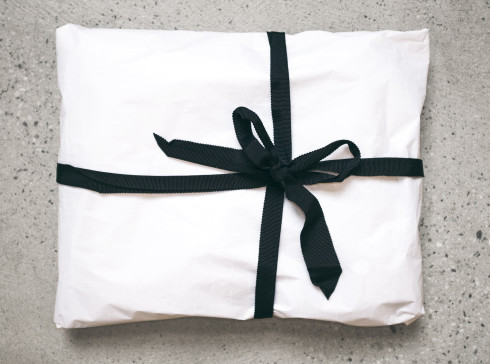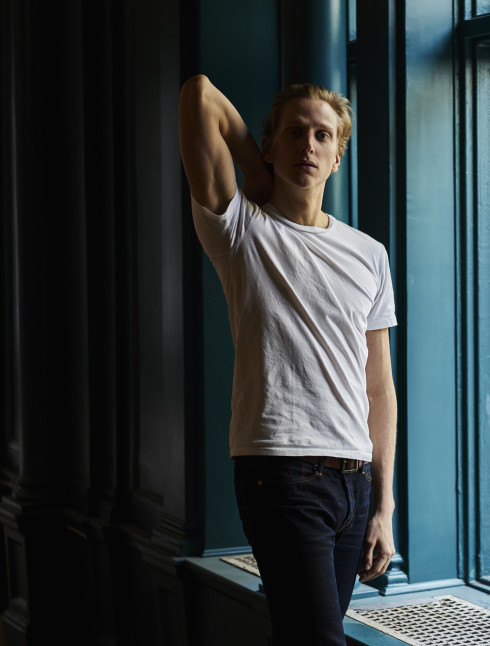
MYKKI BLANCO
For the first time since he was sixteen, anarchist poet-cum-rapper Michael David Quattlebaum, Jr., is homeless. “There’s usually not even a sublet period,” explains the 26-year-old performer from the couch of Williamsburg’s Fast Ashleys studio. He’s just finished shooting the editorial for this issue, a photo session that had him shifting and vogueing as Mykki Blanco, his altogether-more-famous, teen-girl rap alias, and is now lacing up a pair of white, patent-leather ankle boots that put him at an easy 6’4”, ready to run to his next engagement. “On an average day, I wake up in a new city at a hotel, write, soundcheck, eat, maybe explore the city, do the show, wake up maybe in the same city the next day, write, do something else,” says Quattlebaum. “A new city, a new show, a new day.”
The California native is describing his frenetic existence over the past several months, a period which has been crazed, ambitiously scheduled, and undeniably transformative for the now-not-entirely-underground multimedia artist. During this time, Quattlebaum, as Mykki Blanco, has released his first EP, Betty Rumble: The Initiation EP, unleashed a series of provocative videos, including the Francesco Carrozzini-directed “Wavvy,” and put on his “slam-jam,” brazenly aggressive show in locations as far-flung as Moscow and Lisbon. He’s collaborated with MOCAtv, filmed with Italian Vogue, and played with Death Grips and Grimes. A show in London drew some six or seven thousand fans. In short, his other half, the caramel-haired, black bandeau bra-fit Mykki Blanco, has taken off.
Mykki Blanco was born out of a sharp sense of humor and an overflow of raw performance energy. “I always took myself very seriously as an artist,” explains Quattlebaum, “but there came a point where I wanted to do something more playful.” Mykki Blanco was initially an Internet performance project. “I discovered haul videos—YouTube videos where teenage girls go shopping then spill the content of their bags—and wanted to comment on the Nicki Minaj-Lil’ Kim feud,” recalls Quattlebaum. “I was also really into the idea of Dee Dee Ramone—a male punk performer with a female name.”
In the fall of 2010, Quattlebaum started transforming into aspiring rapper Mykki for self-filmed Facebook videos. “I would dress my room up like a teenage girl’s—with Rihanna and Drake pictures on the walls—and put on makeup and a wig and make these videos,” he says. Eventually, a friend suggested that Mykki live out her dream and actually rap—the beginning of something much more involved and very nuanced. Her first live performances featured a wild, largely improvised set—one that utilized Quattlebaum’s flair for the dramatic, direct, rather confrontational persona and minimal clothing. She left the audience in applause.
“It was this organic process where Mykki was very much steeped in the art world and kind of the poetry world,” explains Quattlebaum. “I performed at the Museum of Contemporary Art in Miami with Gang Gang Dance. I would do poetry readings at the Journal and OHWOW. Then, slowly but surely, I started to work with real producers and as I got kind of serious about the music, I realized there was a lot that I could say and that there was a lot that I wanted to do.”
Mykki raps about insidious aggression over sinister, minimalist production and, in the tropicalia beat-laced club banger “Wavvy,” pill-popping-charged sex. She looks to riot grrls Le Tigre and performance artists like Japanese art collective Dumb Type as inspiration. Anaïs Nin is an influence. So is Eminem. Mykki is representative of a subculture and a segment of the underground, but Quattlebaum wants to make it clear that she is not to be boiled down to a symbol of gay rap, nor is this identity an alter ego. Rather, Mykki is an extension of the lithe, tattoo-covered (a Star of David referencing his Jewish heritage, a series of crescent moons) artist’s greater self. She’s much broader than you might want her to be.
After all, Quattlebaum was performing—and shifting amongst complex identities—long before the downtown art and fashion world came to accept him as Mykki Blanco. “I was a child actor and I was very much a stage kid. I wanted to be on TV. I wanted to be on Nickelodeon. I wanted to be on All That. I auditioned for Dawson’s Creek a couple of times,” says the artist of his early years. “As I got older, my interest in acting decreased just because I was getting angsty. I was starting to read a lot of Communist literature. And it shifted somehow to performance art.”
Quattlebaum founded a performance art collective, Paint in Consciousness Experimental Theater, in his transplanted hometown of Raleigh, North Carolina, at fifteen and ran away to New York a year later, stealing a hundred dollars from his mom’s wallet and taking the Greyhound up. He stayed out all night, shoplifted to rebuild a stolen wardrobe, and won the go-go boy contest at East Village bar the Cock more than a couple of times. He was grounded when he returned home a few months later.
In 2008, Quattlebaum made his way back to the city—but not before dropping out of two schools, the Art Institute of Chicago and Parsons, and passing on two full scholarships. He found his voice in performance through several years of genre-hopping—there were experiments in painting, an internship at Team Gallery, late nights spent photographing “summer drugs and flesh,” and so on. The result is simultaneously cheeky and critical, male and female, poignant yet playful, childish, punk, transgressive, damaged Betty Rubble, sweet Black Moon Sailor, ready to start a party, or a riot: as layered as its creator. “I came to spread my vision, my subculture, my people,” exclaims Quattlebaum with a sly grin. “Freaks, fags, fly women, you know what I mean: people of the street. Avant garde for all.”
He says that the release of “Wavvy” in August 2012 changed everything. “When ‘Wavvy’ came out, after the video, it was like that was it, you know? This wasn’t a one-time thing. This wasn’t a gimmick. This was the beginning of a career,” Quattlebaum says. Today, Mykki is preparing for two new releases—her debut album, which will drop sometime in 2014, and a new mixtape, Miss Snow White: The Street Tape, expected in the next few months.
“I didn’t have any blueprints for how I was going to start this career, but I just thought, I should do whatever I want, and we’ll just see what happens,” says Quattlebaum. “Now, every couple of months you just wonder, I’m doing this and I’m doing that and is this paying off? Am I going to really reach as many people as I want? Am I going to be signed by a label? Do I need to be? The doubt is the hardest part, but you keep working because you realize that the things that are cultivating the doubt—you don’t do it for those reasons. And so you do it because you should have a passage to the lineage of your work and you’re going to leave your mark on the world anyway and when you remember that, it kind of humbles you and the doubt kind of seizes. Because the doubt is built by a desire—because you’ve come far, but you see how far you could go.”
Styling by Zara Zachrisson at ArtList New York. Makeup by Niki M’Nray at ArtList New York. Hair by Erika Svedjevik at L’Atelier NYC. Stylist’s assistant: Tess Herbert. Photographed at Fast Ashleys, Brooklyn.
Ashley Simpson writes about art, culture, and fashion for Interview, V, Style.com, and W. She grew up in Hawaii and the South and is currently based in Brooklyn.
